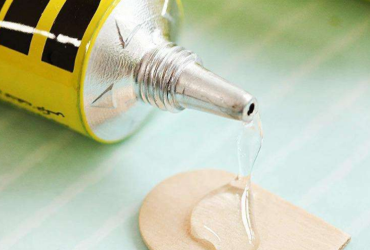The history of polyurethane paints and varnishes began more than fifty years ago, when Mr. Otto Bayer first synthesized polyurethanes from alkyd resins and aromatic diisocyanates.
But due to the aromatic nature of the monomers, polyurethanes tended to yellow under the influence of UV radiation and were therefore not actively used in industry at first. This in turn led to their main use for painting interior surfaces.
But the discovery of the aliphatic isocyanate hexamethylene diisocyanate (HMDI) solved the yellowing problem. Thus, the first two-component polyurethane (PU) coatings based on aliphatic diisocyanates and polyols were born.
Polyurethane coatings and varnishes are mainly a large class of polymers.
The main component of polyurethane resins is polyols synthesized on the basis of substances used in conventional alkyd paints and varnishes, so the price of polyurethane materials is relatively low.
Polyols are oligomers consisting of fairly large molecules with about a few dozen active sites.
The second component of polyurethanes is diisocyanate hardeners, which consist of small molecules with two active sites.
During film formation, the active sites of the diisocyanate combine with the active sites of the polyol to form urethane bonds. One polyol molecule can be linked to many other polyol molecules via diisocyanates, and so on.
In this way, a polyurethane coating film with a branched three-dimensional network structure is obtained. Such films are resistant to water, acids, mineral and organic oils, gasoline and oxidants.
PU paints and varnishes have the following unique properties:
Cost-effectiveness of polyurethane coatings. The average dosage is about 100-150 g/m2
Simple and easy to use. Usually no special requirements are made for application equipment
Drying speed. Drying time can vary from 1 to 8 hours, depending on the combination of different binders and hardeners
Fast hardening while maintaining elasticity and impact resistance
Polyurethanes based on two-component systems have high water resistance, relatively good chemical resistance (although not as good as epoxy coatings in this regard), high wear resistance, as well as corrosion protection and excellent decorative properties.
The properties of polyurethane coatings depend on the curing agent and resin
Since polyurethane coatings are produced based on a variety of base materials and hardeners, they can be used in various fields.
By using polyols and aromatic isocyanates (TDI), inexpensive coatings can be obtained. They are characterized by fast drying speed and good chemical resistance, but their main disadvantage is that they tend to yellow easily.
In order to prevent polyurethane coatings from yellowing, aliphatic isocyanates (NDI) are used as hardeners. Polyurethane coatings based on them have the characteristics of high weather resistance, chemical resistance, yellowing resistance and high elasticity.
Using isophorone diisocyanate (IPDI) allows polyurethane coatings to dry quickly.
By using different types of resins with different hydroxyl values, the gloss, adhesion, and water resistance, weather resistance and chemical resistance of polyurethane coatings can be influenced.
Lencolo is at the forefront of the development of the light-curing UV new material industry, and has a number of invention patents. It has its own factory and R&D laboratory.Exported to Asia, the Middle East, Europe and other places.Our materials include UV resin, PU resin, photoinitiator, monomer and so on.If any inquiry, welcome to contact us at any time.
#polyurethane #construction #pu #poliuretano #epoxy #polyurethanefoam #pumachine #polyurethanemolding #automatica #resin #urethane #flooring #concrete #sanding #waterbased #rubber


2022-08-03



2025-01-06
